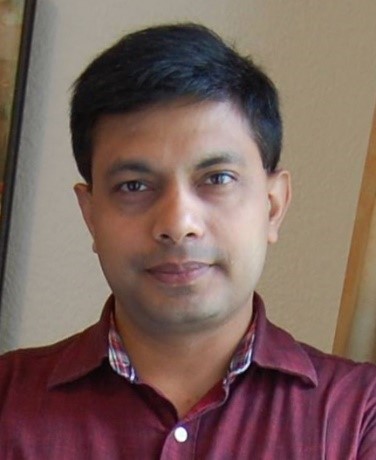MOVE Tech Talk - Apr 2024 - Exploiting Learning and Sparcity for Joint Radar Communications
Recent interest in joint radar-communications (JRC) has led to the design of novel signal processing techniques to recover information from an overlaid radar-communications signal as well as transmit a common signal for both systems. In this talk, we focus on two important tools for the design and signal processing of JRC systems: learning and sparsity. The interest in learning-based JRC is driven largely by the need to solve difficult nonconvex optimization problems inherent in a JRC design as well as to address the highly dynamic channel environments. Toward fully realizing the coexistence/co-design of both radar and communications, the optimization of resources for both sensing and wireless communications modalities is crucial. But the optimization-based approaches suffer from high computational complexity and their performance strongly relies on factors such as perfect channel conditions, specific constraints, and mobility. In this context, learning techniques provide robust performance at an upfront training cost. We discuss applying learning to various JRC aspects including channel estimation, antenna selection, resource allocation, and wideband beamforming. The second half of the talk focuses on exploiting sparsity in a general spectral coexistence scenario, wherein the channels and transmit signals of both radar and communications systems are unknown at the receiver. In this dual-blind deconvolution (DBD) problem, a common receiver admits a multi-carrier wireless communications signal that is overlaid with the radar signal reflected off multiple targets. The communications and radar channels are represented by continuous-valued range-time and Doppler velocities of multiple transmission paths and multiple targets. We exploit the sparsity of both channels to solve the highly ill-posed DBD problem by casting it into a sum of multivariate atomic norms (SoMAN) minimization. Toward the end of the talk, we focus on highlighting emerging JRC scenarios, particularly at mm-Wave and THz frequencies, vehicular applications, distributed radar-communications networks, intelligent surfaces, and aerial channels.
Date and Time
Location
Hosts
Registration
-
 Add Event to Calendar
Add Event to Calendar
Loading virtual attendance info...
- Contact Event Hosts
- Co-sponsored by IEEE-USA MOVE Program
Speakers
Kumar Vijay Mishra of United States DEVCOM Army Research Laboratory
Biography:
Kumar Vijay Mishra (S’08-M’15-SM’18) obtained a Ph.D. in electrical engineering and M.S. in mathematics from The University of Iowa in 2015, and M.S. in electrical engineering from Colorado State University in 2012, while working on NASA’s Global Precipitation Mission Ground Validation (GPM-GV) weather radars. He received his B. Tech. summa cum laude (Gold Medal, Honors) in electronics and communication engineering from the National Institute of Technology, Hamirpur (NITH), India in 2003. He is currently Senior Fellow at the United States Army Research Laboratory (ARL), Adelphi; Technical Adviser to Singapore-based automotive radar start-up Hertzwell and Boston-based imaging radar startup Aura Intelligent Systems; and honorary Research Fellow at SnT - Interdisciplinary Centre for Security, Reliability and Trust, University of Luxembourg. Previously, he had research appointments at Electronics and Radar Development Establishment (LRDE), Defence Research and Development Organisation (DRDO) Bengaluru; IIHR - Hydroscience & Engineering, Iowa City, IA; Mitsubishi Electric Research Labs, Cambridge, MA; Qualcomm, San Jose; and Technion - Israel Institute of Technology.


